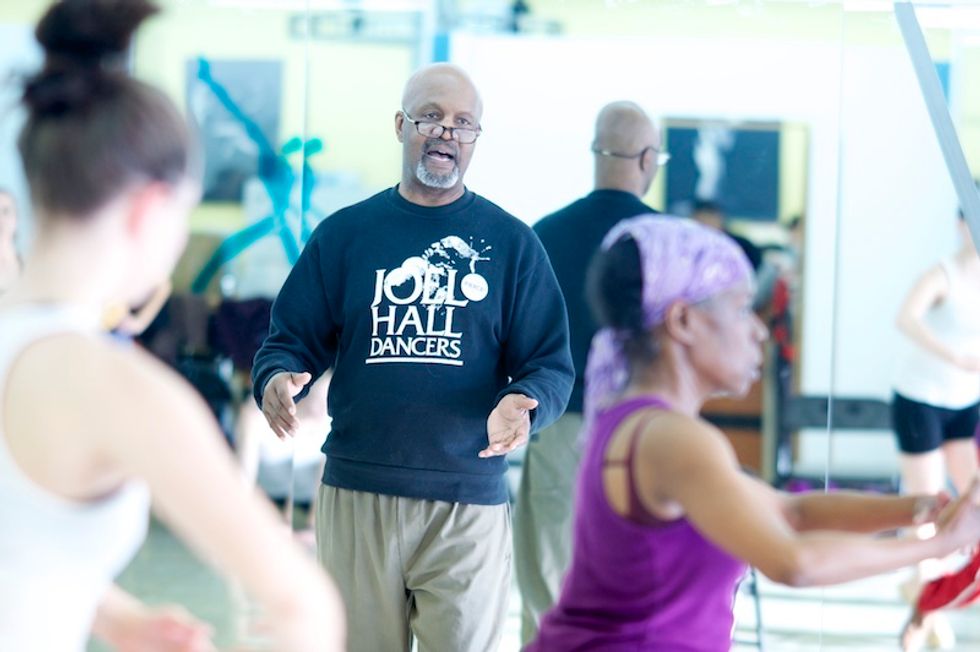
Even the most disciplined dancers admit to weeping in class sometimes. Sorrow and fear are human expressions, but teachers may not always know how to navigate a sudden burst of waterworks.
“Stress is in the body,” explains Linda Taylor, a school psychologist in Idaho who has taught ballet to all age groups, from toddler to professional. “Sometimes the release of it can bring on tears, especially for older students.”
“We all need to cry sometimes,” says Joel Hall, founder and director of Joel Hall Dancers & Center in Chicago. An instructor who has taught for 46 years, he admits he used to feel panicked at the sight of watery eyes. Now, he has a better understanding of students’ feelings and how to work with them.
Here are five expert tips from Taylor and Hall for navigating grief in dance class.
It may not be about you.
Teenagers and college-age dancers may feel overcome with relationship issues or worry over finals. “The amount of stress some of these older dancers are under is incredible,” says Taylor. “All of a sudden, they feel they just can’t keep it together anymore.” Triggers may include beautiful music that evokes memories. “Understand students may be coming into class with ‘unfinished business’ along with their enthusiasm to dance,” says Hall. “If you know the student at all, you may know he or she had a death in the family or may be having a difficult period in their lives.”
It could be about you, kind of.
Crying may also happen if a student becomes injured in class on your watch, says Hall. Depending on the seriousness of the situation, it may be appropriate to interrupt instruction to make sure the student has an ice pack or emergency care. If the student isn’t physically hurt, maybe it’s a teacher’s corrections that trigger mental discomfort. “Not every student is ready to hear a correction at any one time,” adds Hall. “The timing has to be in tune with the student. If they can’t manage a correction, that could be an indication that they’re not ready to receive it.”

Joel Hall teaching. Photo courtesy of Hall
Your students are still in development.
Among young children, ages 3 to 5, weeping is expected because dancers don’t yet understand the structure of a class, explains Taylor. Like many new experiences, ballet can be overstimulating. She lets her “baby ballerinas” watch in the comfort of a parent’s arms until they’re ready to join in. When she hands out tutus or other props, they usually can’t hold back their excitement, allowing the parent to leave the room quietly, while the child leaps around with the others. “Sometimes, kids just have a sad day,” she says. “They shed a few tears, and they’re ready to go.” For 6-year-olds, crying may happen because dancers are experiencing their first full days at school and don’t want to spend Saturdays away from their mothers.
Acknowledge them without stopping class.
Taylor will hold a crying child on one hip, while the others move across the floor or begin another activity. She attends to fears and “boo boos” while calling out steps. “Then I ask if they’re ready to go down and dance, and they’ll say, ‘Uh-huh,'” she says. “I don’t make a big deal about it. I don’t force it. They just need to know they’re loved and cared for and this is a safe place.” Once, a student started sobbing during a stretch, Hall remembers. “I asked if she was OK,” he says. “Then I let her have her experience while the class continued.”
Follow up with the student after class.
After an emotional moment, Hall talks to students privately outside of class to find out what may have triggered them. Eventually, he may ask how students can work with less burden, so that they can focus on the present. “The expectation is that we try to free ourselves to dance, so that when we’re in class, we are in class focusing on that plié or tendu,” he says. “We need to get to the point where we show up with our water bottles and our dance bags ready to move. We leave everything else outside. But I don’t know a teacher who hasn’t experienced crying in class. We have to honor it and move forward.”




